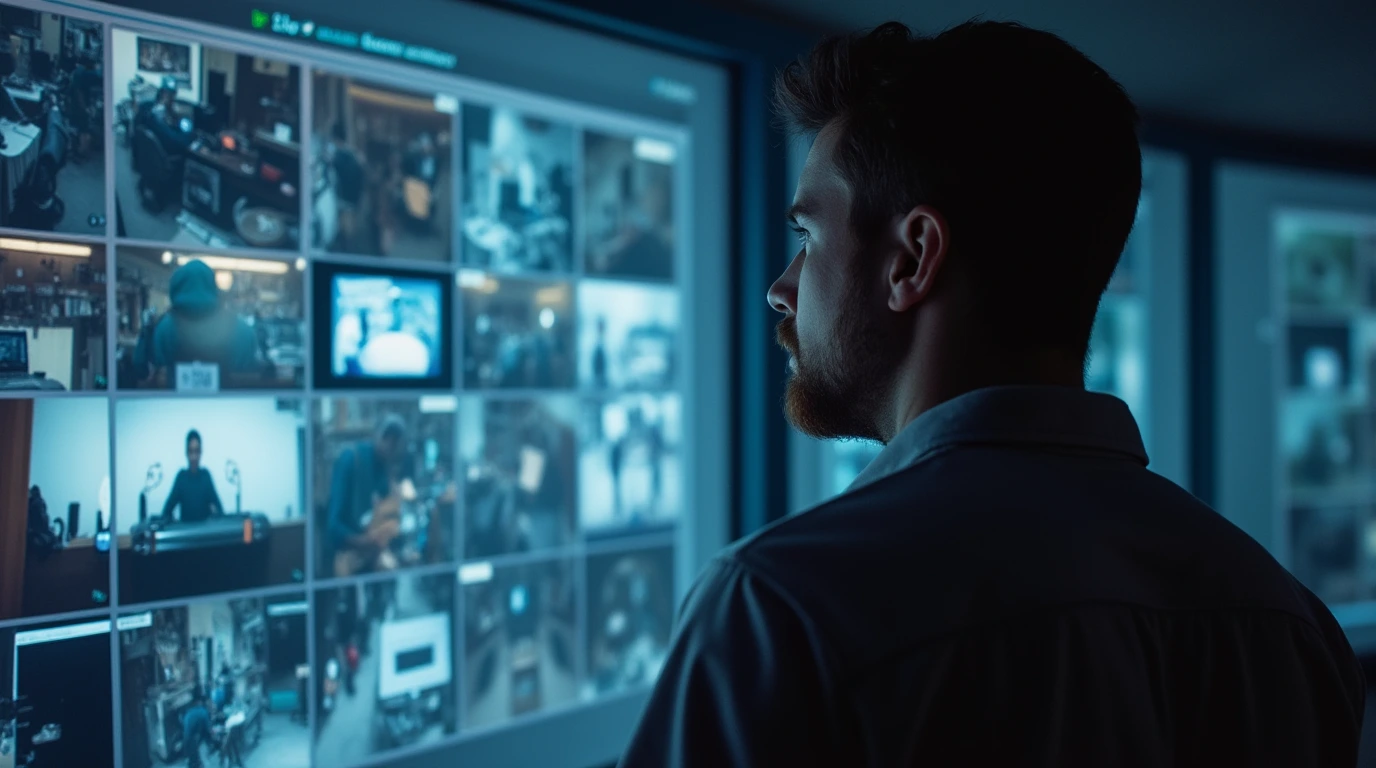Live Remote Video Surveillance provides advanced security solutions through real-time monitoring capabilities. Through its advanced capabilities, live remote video surveillance delivers a security solution that monitors properties, assets, and operations in real-time. Internet-connected devices enable business owners, security professionals, and homeowners to monitor live video feeds, allowing immediate responses to security threats and operational emergencies. Modern surveillance systems combine AI analytics with cloud storage and remote access capabilities to enhance proactive safety measures and crime prevention strategies.
Table of Contents
ToggleHow Live Remote Video Surveillance Works
Remote surveillance systems provide real-time security monitoring through high-definition cameras, cloud-based infrastructure, and advanced network protocols. The system involves several key components:
Surveillance cameras are installed at critical entry points, outdoor spaces, and high-risk areas to ensure constant visibility. Security systems commonly combine fixed-position cameras for broad area coverage with PTZ cameras, which allow flexible monitoring capabilities. Captured footage undergoes compression before being securely transmitted via internet connections using H.265 protocols to improve bandwidth efficiency. Video feeds are stored either on local DVR/NVR devices or cloud solutions, enabling remote retrieval and analysis capabilities.
Authorized users gain access to live surveillance feeds through specialized security apps or web dashboards, facilitating remote management, playback functions, and smart security system integration. AI-driven analytics systems detect potential threats by analyzing motion patterns and sending instant alerts for unusual movement, unauthorized entries, or abnormal behaviors. Users receive these alerts via SMS messages, emails, or mobile app notifications.
Key Features of Live Remote Video Surveillance
Security teams and property owners receive alerts instantly whenever the system detects unusual activity during the 24/7 monitoring process. Instant notifications enable immediate responses that help prevent possible security violations. Modern surveillance systems deliver HD 1080p+ recordings alongside infrared night vision capabilities that maintain clear visibility at all times, regardless of lighting conditions.
These systems have built-in two-way audio, allowing users to communicate directly with visitors or staff members through a speaker-microphone setup. Cloud surveillance systems protect against data loss by automatically saving footage onto encrypted cloud storage. Users can access data from any location through cloud integration, enabling both remote access and historical data retrieval. Live remote surveillance creates an integrated security network to safeguard businesses and homes by connecting with access control systems, burglar alarms, and fire detection technologies.
Benefits of Live Remote Video Surveillance
Real-time surveillance camera monitoring functions to prevent intrusions, theft, and vandalism through its deterrent presence. Security teams and law enforcement receive prompt alerts through verified alarm signals, enabling immediate action. Businesses employ remote surveillance to monitor worker productivity while enforcing company protocols and improving workplace safety measures. Live video analytics help retail outlets, warehouses, and corporate offices enhance operational efficiency and improve customer service capabilities.
Property owners, including homeowners and business managers, can supervise their properties from any location via mobile devices such as smartphones, tablets, and computers. Remote video access offers property owners peace of mind and control over security, regardless of their location. Automated surveillance systems allow businesses to maintain high-security standards while cutting labor expenses by reducing the need for on-site security staff. Through live monitoring, emergency services experience fewer false alarms, reducing unnecessary responses.
Applications of Live Remote Video Surveillance
Surveillance cameras installed in retail spaces and business locations prevent shoplifting, track consumer actions, and improve staff coordination. Live surveillance on construction sites protects valuable equipment from theft and monitors worker safety by tracking compliance requirements. The Residential Property Protection system allows homeowners to keep an eye on their driveways, entry points, and interior spaces through remote monitoring, maintaining real-time security. Surveillance networks that cover entire cities function to enhance public security by tracking traffic patterns and supporting police in preventing crimes. Warehouses, freight hubs, and logistics centers rely on remote video surveillance technology to oversee inventory control, track shipments, and evaluate employee performance.
Critical Factors to Consider When Deploying Live Remote Video Surveillance
Property owners need to evaluate risk factors to pinpoint vulnerable locations that demand continuous monitoring. The best camera technology for a site should match both location requirements and security goals when selecting from fixed cameras, PTZ cameras, thermal imaging cameras, and AI-enhanced models. The transmission of real-time video requires a stable, high-speed internet connection. Organizations with numerous surveillance points need specialized network setups for continuous connection. All organizations must follow data protection policies and monitoring laws while ensuring that staff members and guests are aware of surveillance activities.
Frequently Asked Questions (FAQ)
Security personnel can detect and verify breaches as they happen and respond immediately through real-time monitoring, minimizing crime escalation risks.
Modern multi-site surveillance platforms let businesses manage security for multiple properties through centralized control systems.
Cloud storage provides protection against data loss while giving remote access and encrypting footage to mitigate cyber threats, making it a dependable substitute for conventional DVR/NVR systems.
These systems integrate with burglar alarms, motion sensors, smart locks, and access control systems to build a comprehensive, interconnected security network.
Retail businesses, logistics companies, construction sites, public safety operations, corporate offices, and residential properties see the greatest advantages from live remote surveillance systems.
Conclusion
Live remote video surveillance revolutionizes security management by detecting threats in real-time while enabling proactive monitoring and automated response mechanisms. Both businesses and homeowners can utilize AI-based analytics, cloud storage, and remote access features to strengthen their protection systems and enable quick response during emergencies.
Smart surveillance technology minimizes security risks while delivering operational efficiency improvements, reduced costs, and strengthened asset protection. Contact us today to discover how our live remote video monitoring solutions can be customized for your security requirements.
For trusted security solutions and professional service, check out our customer reviews and ratings on Yelp and see why IWatcher Security is the top choice for live remote video surveillance.


